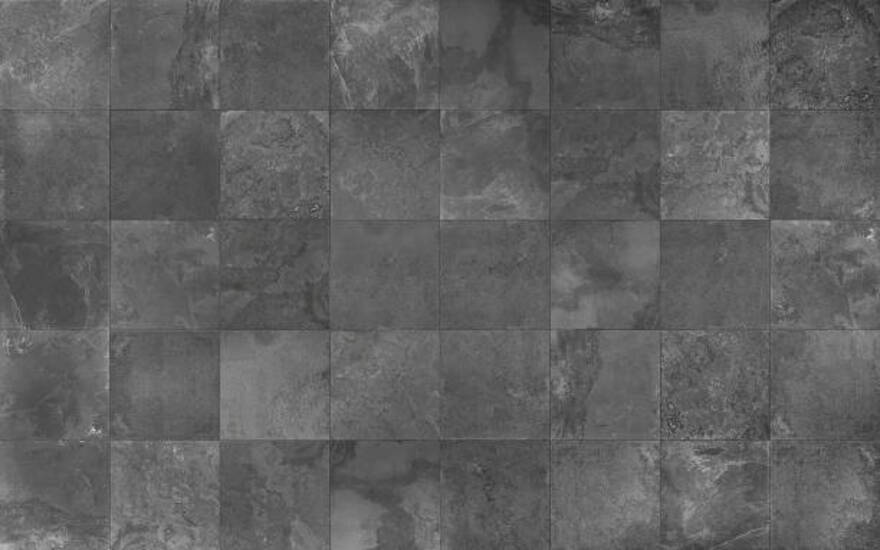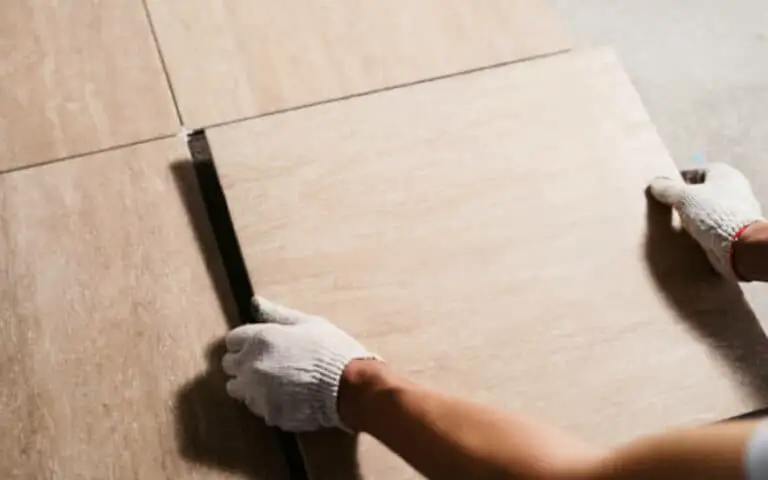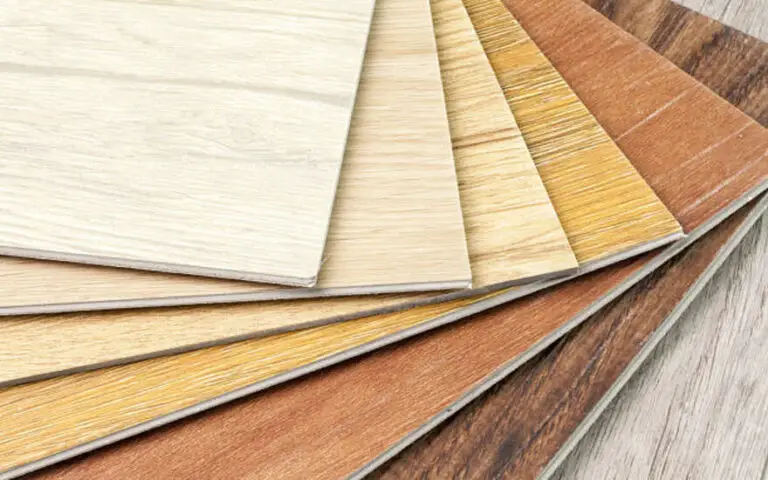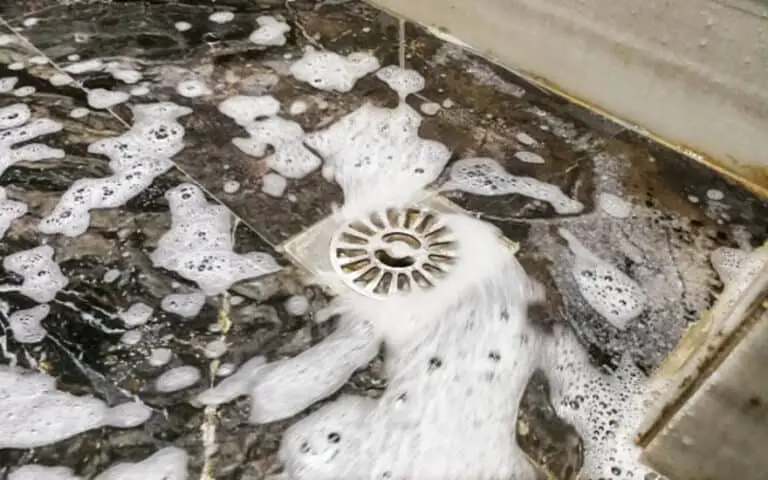In this blog post, I’ll explore the benefits of epoxy bathroom flooring so you can determine which flooring is best for your home.

10 Benefits of Epoxy Bathroom Flooring
Epoxy flooring is a great choice for bathroom surfaces due to its many advantages. It is a durable, waterproof, and easy-to-clean option that can last many years. Furthermore, epoxy flooring can be applied quickly and is cost-effective. Benefits:
1. Durability
Epoxy bathroom flooring is known for its durability, which is why it is a popular choice for high-traffic areas like public restrooms. Epoxy coating is a mixture of polymer resins and hardeners applied to concrete flooring, creating a durable, waterproof surface that can withstand heavy use.
This hard-wearing coating is resistant to scratches and abrasion, making it an ideal choice for areas that experience a lot of foot traffic. In addition, epoxy flooring is resistant to chemicals, making it suitable for use in bathrooms and other wet areas. This type of flooring can last for years with minimal maintenance, saving you money in the long run.
2. Easy to Clean
Epoxy flooring is one of the best options when cleaning your bathroom floor. The smooth, non-porous surface of epoxy flooring makes it incredibly easy to clean and maintain. As it is a sealed surface, dirt and grime won’t be able to penetrate it, and Any messes may be quickly and easily cleaned up.
The seamless, grout-free surface makes it much easier to clean than tile, and since it is slip-resistant, it won’t be dangerous to walk on when wet. Epoxy flooring also has an antibacterial surface, making it a great choice for public restrooms. With minimal maintenance, you can keep your epoxy bathroom floor looking beautiful for years.
3. Stain Resistance
Stain Resistance is one of the most important benefits of epoxy bathroom flooring. Epoxy is highly resistant to staining, so you won’t have to worry about spills, dirt, or other substances seeping into the floor and causing permanent damage.
This makes epoxy an ideal choice for bathrooms, as it can withstand the room’s moisture and humidity without staining or discoloring. Additionally, epoxy is easy to clean and maintain, which will help to keep your Bathroom looking spotless at all times.
4. Beautiful Finish
When it comes to epoxy bathroom flooring, one of the greatest benefits is its beautiful finish. It can be customized to fit any style, from modern and contemporary to traditional and vintage.
Epoxy flooring comes in various colors, but its lustrous, glossy finish will make your Bathroom look like it belongs in a luxury spa. It also provides a seamless, grout-free space, making it easier to keep clean and sanitized. With epoxy bathroom flooring, you can create a luxurious, eye-catching finish that will last for years.
5. Cost Effective
Epoxy bathroom flooring is a cost-effective option for sprucing up their bathroom look. Not only is epoxy flooring much cheaper than tile flooring, but it also requires less maintenance and upkeep. Epoxy flooring is highly durable, and when properly installed, it can last for years without needing to be replaced.
Furthermore, epoxy flooring is easier to install than tile, and since it’s a one-time cost, it might reduce expenditures. Because of its durability and resistance to water and stains, epoxy flooring is particularly well suited to washrooms. With all these benefits, epoxy flooring is a great option for those looking for a cost-effective and long-lasting bathroom floor.
6. Non-Slip Surface
When it comes to safety, especially in a bathroom setting, it is essential to find a flooring option that will provide a non-slip surface. Epoxy bathroom flooring offers the best in non-slip protection. Epoxy has a unique molecular structure that makes it extremely resistant to slipping and sliding, even when wet. This makes it the perfect choice for bathrooms, as it can help to prevent slips and falls.
7. Quick Installation Process
When installing bathroom flooring, you want a quick and easy process. Epoxy flooring is the ideal solution for this. Epoxy flooring can be applied in as little as one day and is often ready to walk on within 24 hours.
This makes it the perfect choice for busy households or commercial settings needing to get the job done quickly. Additionally, as it is a liquid-based solution, it can be applied directly onto the existing surface, making installation even simpler.
8. Low Maintenance Requirements
One of the major advantages of epoxy bathroom flooring is that it requires very little maintenance. The material is extremely durable and can withstand heavy use, making it ideal for busy bathrooms. Moreover, the surface is easy to clean and requires no special products or tools.
This makes them perfect for family bathrooms and those who only have a little time for cleaning and maintenance. In addition, epoxy floors are very cost-effective and will last many years with minimal upkeep.
9. Moisture Resistance
Moisture resistance is another benefit of epoxy bathroom flooring. Epoxy is waterproof and moisture-resistant, making it perfect for bathrooms with a lot of water and humidity.
Unlike other flooring materials, such as tile or wood, which can absorb moisture and become damaged, epoxy maintains its integrity and is unaffected by moisture. This makes it a more durable and reliable bathroom flooring material, as it will not rot, expand, or warp when exposed to water.
10. Heat Tolerance
When it comes to epoxy bathroom flooring, one of the most important benefits is its heat tolerance. Epoxy can withstand temperatures up to 120°C, making it ideal for bathrooms and kitchens that are frequently subject to high temperatures.
This makes it a great choice for bathroom flooring and areas exposed to extreme temperatures, such as outdoor patios, garages, and basements. With its heat tolerance, epoxy flooring is much more resistant to cracking, peeling, and fading, making it a long-lasting and cost-effective solution for your flooring.
Epoxy Flooring vs. Tile: What’s the Difference?
Two primary materials are used for bathroom flooring: epoxy flooring and tile flooring. While both materials are great options for bathrooms, they have unique advantages and disadvantages. Understanding each material’s strengths and weaknesses is important before deciding which is right for your space.
The durability of Epoxy Flooring
While both offer a durable and beautiful finish, they also differ. For example, epoxy flooring is much more durable than tile and can last for decades with proper care. Additionally, epoxy flooring is more resistant to moisture, heat, and stains than tile.
When deciding between epoxy and tile for your bathroom floor, consider the type of environment you will be installing the flooring and the amount of maintenance you are willing to do. Epoxy flooring is a great choice for busy households and public spaces as it requires very little maintenance and is extremely durable.
On the other hand, tile may be a better option for those who prefer a more traditional look and don’t mind the upkeep that comes with it.
Cost Comparison of Epoxy Flooring and Tile
In this section, we’ll compare the durability, cost, and installation of epoxy flooring and tiles, so that you may choose the right Bathroom option.
Durability is one of the most important factors when choosing bathroom flooring. Tiles are known for their durability, as they can last for decades with proper care and maintenance. Epoxy flooring is also durable, as it is resistant to scratches, stains, and abrasion. The epoxy coating also adds an extra layer of protection against water damage.
7 Common Mistakes to Avoid When Installing Epoxy Flooring in the Bathroom
When installing epoxy flooring in the Bathroom, it is important to take extra care to avoid mistakes that could lead to costly repairs. From moisture buildup to poor surface preparation, Incorrectly laying epoxy flooring in a bathroom is a common problem.
1. Not Checking for Moisture
Leaving the bathroom without first checking for moisture before installing epoxy flooring is a typical and expensive error. Moisture buildup underneath the coating can lead to mold growth, peeling and cracking, and even structural damage to the floor.
It is essential to check for moisture before beginning the installation process. This can be done with a calcium chloride test which will detect any water that may be present. Please do this to avoid costly repairs down the road.
2. Not Cleaning the Floor Thoroughly
One of the most common mistakes when installing epoxy flooring in your Bathroom is not cleaning the floor thoroughly. Before you begin applying any coating, it is essential to clean the surface of your bathroom floor.
This means removing any dust, dirt, and other debris that may be present. If you don’t do this, the epoxy won’t adhere properly and may not last as long as it should. To ensure that the floor is completely clean, use a damp mop to remove dirt and dust and then use a vacuum to remove any remaining particles.
It is also important to check for moisture in the concrete, as this can cause the epoxy to bubble and peel away from the concrete. A calcium chloride test can be used to check for moisture levels.
3. Not Using Enough Primer
One of the most common mistakes when installing epoxy flooring in the Bathroom is to use more primer. Primer is essential to ensure that the epoxy adheres properly to the surface and prevents moisture from getting underneath the coating.
Without enough primer, the epoxy might not bond properly, leading to moisture buildup, cracking, and discoloration.
4. Not Applying the Epoxy in Thin Layers
It’s important to remember that epoxy needs time to cure before it can reach its full strength. Using epoxy in thick layers can slow down the curing process and prevent the floor from getting its full power. This can lead to a weak and uneven floor with an unsatisfactory finish.
When applying epoxy in the Bathroom, you should use thin layers and wait for each layer to dry before applying the next. This will help ensure that your epoxy floor will be even, strong, and aesthetically pleasing.
5. Not Sealing the Edges Properly
When installing epoxy flooring in the Bathroom, it is essential to ensure all the edges are sealed properly. This is to ensure that the epoxy has fully adhered to the surface so that it will last for a long time.
If not, water and moisture can get underneath the epoxy and cause it to break down faster. This will help to create a tight seal and prevent moisture from getting underneath the coating. Additionally, pay special attention to seams, corners, and other hard-to-reach spots.
6. Not Allowing Sufficient Curing Time
Once you’ve applied your epoxy flooring, it’s important to allow sufficient cure time. Epoxy flooring requires a specific amount of time to fully cure and harden; if you don’t let it heal properly, you can run into all sorts of issues.
If you try to rush the process, you could end up with a poorly fixed epoxy floor that will last less time or look better than it should. Additionally, you should be aware of the environmental conditions in your Bathroom and adjust the cure time accordingly. The epoxy may not cure correctly if the temperature is too low or too high, resulting in expensive repairs.
7. Not Applying a Top Coat
Once the epoxy floor coating has been applied, it is important to use a top coat to ensure the floor is completely sealed. A top coat will act as a barrier against water, dirt, and other debris, extending your foot’s life. Without a top coat, epoxy is prone to cracking, bubbling, and peeling due to wear and tear. Applying too thick of a top coat can cause the floor to become slippery and unsafe.
How to Prepare Your Bathroom for Epoxy Flooring?
Installing epoxy flooring in your Bathroom can be a great way to add a beautiful and durable finish to the room. You must take the necessary measures to prepare the area for the task. Some pointers to get you going are as follows:
1. Make sure the Bathroom is completely dry and free of moisture. Take a moisture test before installing the epoxy to make sure that the area is suitable for the epoxy.
2. Clean the entire floor thoroughly to remove any dirt, dust, or debris. Use mild soap and a damp cloth or mop to do the job.
3. Vacuum the floor to make sure all dust particles are removed.
4. If the subfloor is not level, use a self-leveling compound to ensure the surface is even and smooth.
5. Apply a primer or sealer to the subfloor to ensure the epoxy bonds properly.
By taking the time to properly prepare your Bathroom for epoxy flooring, you’ll be sure to get the best results possible. With the right preparation, you can have a beautiful and durable epoxy floor that will last for years.
How to Maintain Your Epoxy Bathroom Flooring?
Maintaining your epoxy bathroom flooring is key to preserving its integrity, beauty, and functionality. Here are some simple tips to help you keep your epoxy floor looking and performing like new:
1. Clean Regularly: To keep your floor looking good, it’s important to clean it regularly. Scrub the area with a gentle detergent and warm water to remove grime and dust.
2. Avoid Abrasive Cleaners: It’s important to avoid using abrasive cleaners on your epoxy flooring, as they can cause scratches and damage the finish. Stick to mild detergents and warm water to keep your floor looking its best.
3. Polish: To keep your epoxy floor looking shiny and new, it’s important to polish it on a regular basis. Use a high-quality wax or polish specifically designed for epoxy floors, and apply it in thin layers.
4. Protect from Spills: Epoxy floors are durable and highly resistant to water, but they’re not impervious. Spills should be cleaned immediately, and you can place mats or rugs in areas where falls are likely to occur.
By following these simple tips, you can ensure that your epoxy bathroom flooring looks great and lasts many years.
Summary
Epoxy bathroom flooring is an ideal solution for any home or business due to its many benefits. Not only is it durable and resistant to staining, but it also has a beautiful finish, is cost-effective, and provides a non-slip surface. It is also quick to install, requires minimal maintenance, and is moisture and heat-resistant.



![How To Cut Laminate Flooring Lengthwise [Easy Guide] 4 How To Cut Laminate Flooring Lengthwise [Easy Guide]](https://homequeries.com/wp-content/uploads/2023/02/istockphoto-1162520121-612x612_880x550-768x480.jpg)


